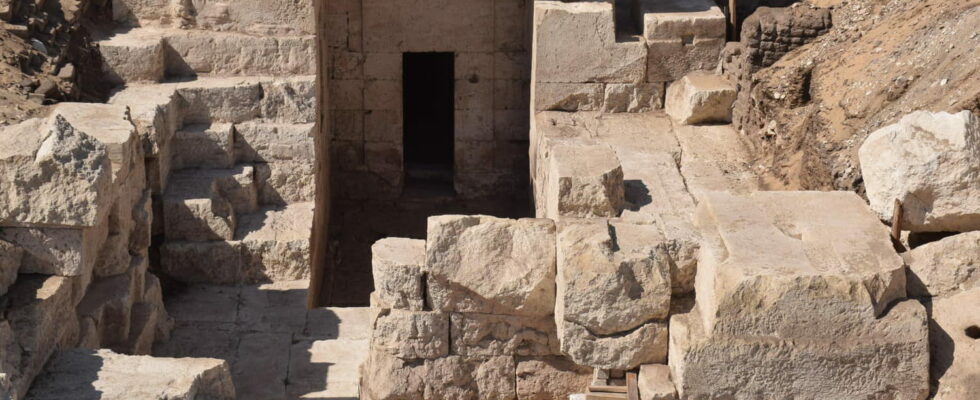At the ancient site of Athribis, archaeologists have unearthed new remains of an impressive temple.
Archaeological excavations continue at ancient Egyptian sites. This is the case in Athribis, an ancient city on the west bank of the Nile, 200km north of Luxor. The site covers more than 30 hectares and has recently been the subject of new research. It contains a temple, the remains of a village and a necropolis as well as old quarries. Experts from the Supreme Council of Egyptian Antiquities and the University of Tübingen made a unique discovery, which was shared by the Egyptian Ministry of Tourism and Antiquities.
They found a hidden entrance which could be that of a temple, dated 2000 years ago. This was suspected thanks to the remains of the pylon, a monumental structure which marks the main entrance. Two 24 meter high towers surrounded it. In one of them, a room that would have served as a storage room for temple utensils and amphorae was cleared.
“Finely smoothed limestone blocks on a vertically cut rock facade could belong to a rock sanctuary,” assured Christian Leitz, head of the project affiliated with the Institute for Near Eastern Studies at the University of Tübingen, in A press release. There might be a door behind it.
According to specialist estimates, this temple could have reached 51 by 18 meters. Spectacular. Hieroglyphic inscriptions also provided an idea of the pharaoh behind the building. This could be Ptolemy VIII, a 2nd-century Egyptian ruler of the Ptolemaic dynasty, who ruled Egypt after the conquest of Alexander the Great.
Wall engravings also made it possible to estimate to whom this sacred place would be dedicated. Min, god of lightning and ancestral royalty, would seem celebrated there. In beliefs, he was the one who fertilized the sky goddess every evening to give birth to the sun, then absorbed by Amont. He is thus also considered as the incarnation of fertility.
The excavations will now focus on the search for this presumed temple behind the pylon, which would still be buried under at least one meter of sand. “The full scientific excavation has started with our team and will still take some time,” said Newsweek Christian Leitz.
